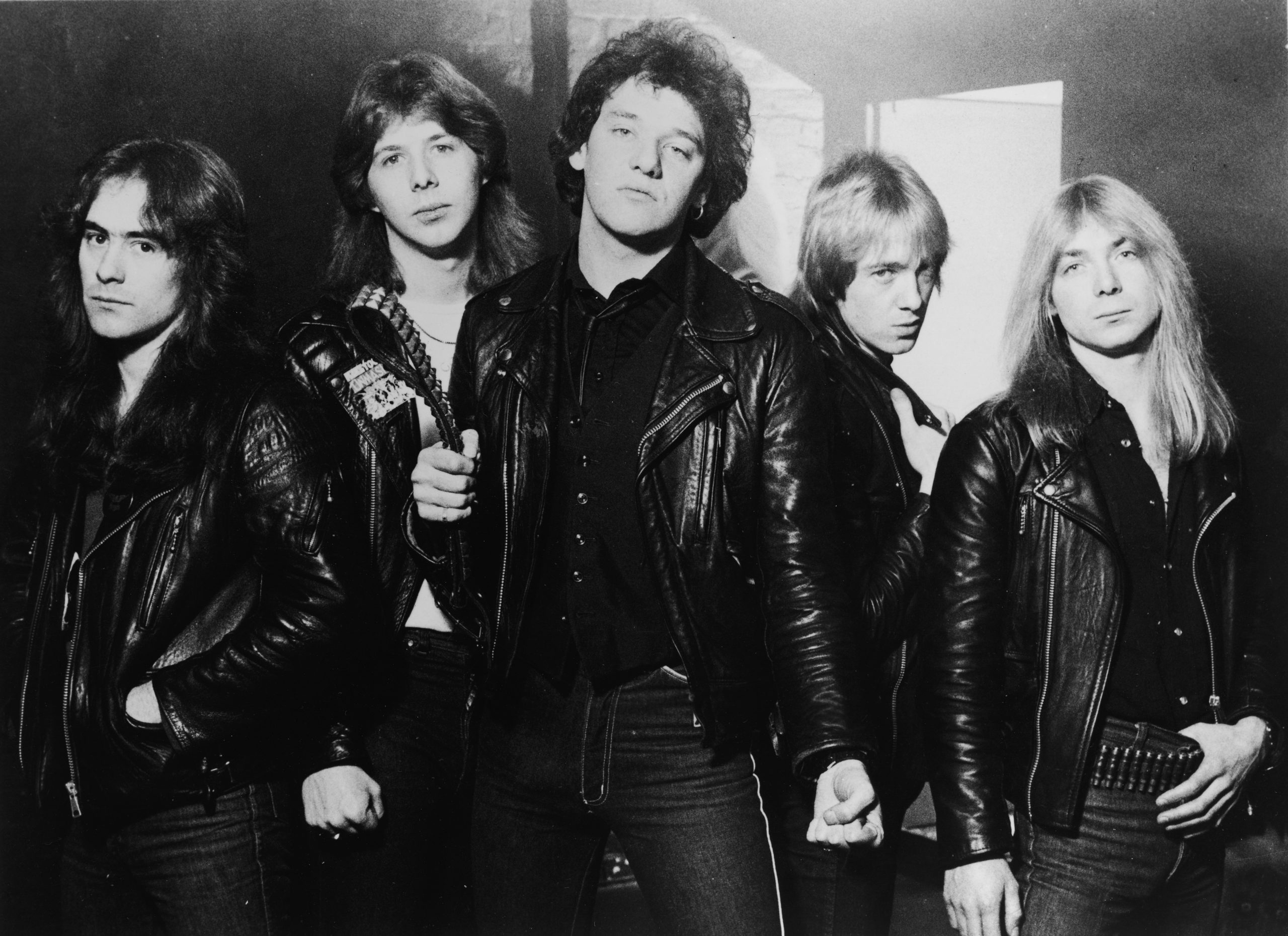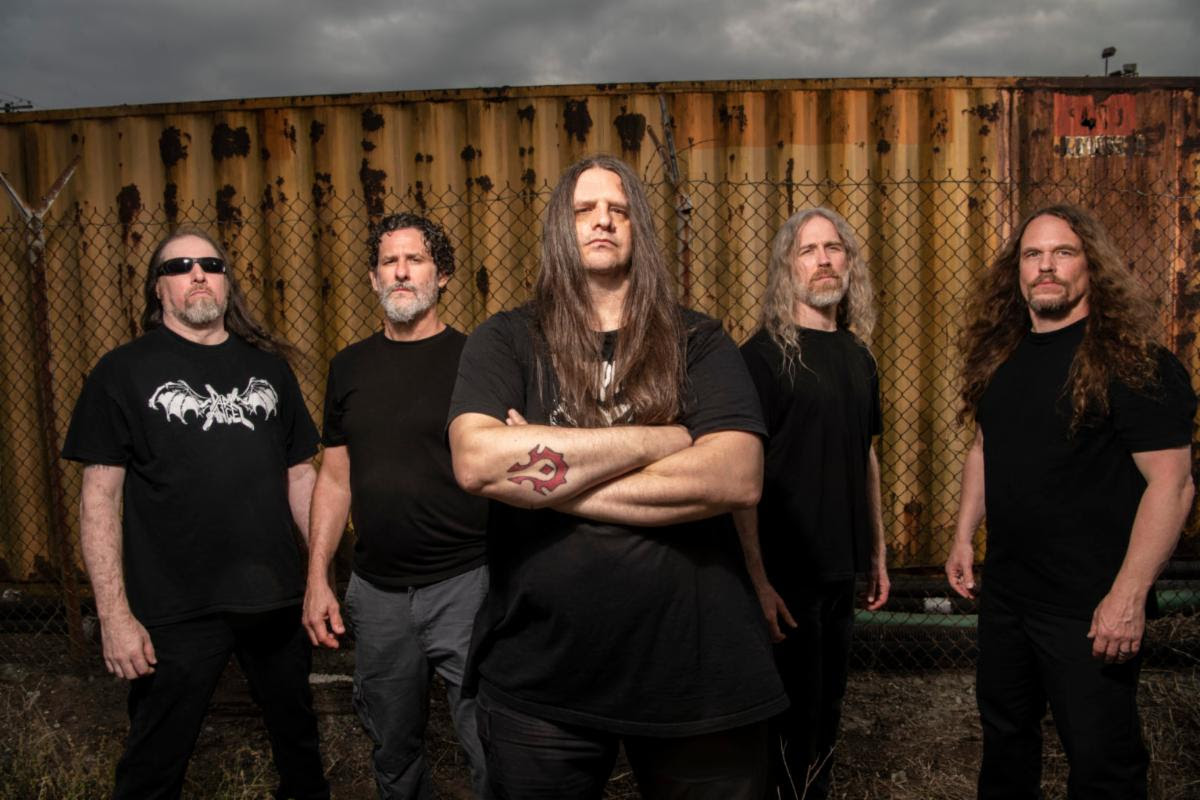My favorite photograph of Neurosis is the one posted on their Wikipedia entry. It's a grainy shot of the band performing in Seattle in 2008. You can make out the band members, but only just. The blue-white eclipse projected on the wall behind them washes out their features.
It's a great picture, despite the graininess, because it captures the way Neurosis the band subsumes its component individuals. Few bands -- and especially few metal bands -- have achieved their degree of ego-free cohesion. Neurosis is a singular entity; their music is an austere ritual. Lots of songwriters say that they ‘channel' their music rather than compose it. Coming from Neurosis, it's a believable claim.
Neurosis formed in Oakland in 1985, rising from the ashes of a previous band called Violent Coercion. Initially, they were a relatively run-of-the-mill member of the burgeoning Bay Area hardcore punk scene. (Neurosis headlined the second-ever show at the legendary DIY venue 924 Gilman Street; Operation Ivy, No Use For a Name, and pre-Green Day punkers Isocracy played the third.)
Neurosis had become something utterly different by their third studio album, 1992's Souls At Zero. This second-tier hardcore band was suddenly hard to describe. A touch of punk remained, but Neurosis also crammed sludgy riffage, gradual dynamic shifts, electronic textures, and a whole clutch of non-rock instruments into their lengthy songs. It was artsy music, by contemporary standards; unlike their didactic and/or goofy peers, Neurosis wrote imposing songs and elliptical lyrics that defied easy interpretation. Drawing on Jungian psychology for inspiration, they started festooning their live performances with disturbing visual projections. (Neurosis finally discontinued the practice a few weeks ago.) Souls At Zero was a rarity -- a truly original, unprecedented metal album.
Over the ensuing decade, Neurosis would synthesize a laundry list of influences -- Black Sabbath, Swans, Amebix, Townes Van Zandt, Black Flag, Loop, Joy Division, Melvins -- into a unique approach. (Unique approaches are rarities to be cherished in the metal world.) By the turn of the millennium, Neurosis's slow-burning shamanism had become its own subgenre: post-metal. Some bands, like ISIS and Mastodon, openly aped Neurosis before pursuing other sounds. Many, many others have tried unsuccessfully to simply imitate them. Post-metal has mostly faded, but Neurosis lives on.
Neurosis toured relentlessly for the rest of the '90s. Upon finding themselves pressured into tours that conflicted with their deep-seated DIY ethics, the band retired both their van and their record label affiliation. Their own Neurot Recordings, which was founded to release music by their ambient side project Tribes of Neurot, became their permanent home. In the decade since, Neurosis has effectively become a self-contained studio act, playing rare live dates while its members lead more balanced lives. (One member, Steve Von Till, is a schoolteacher; it is amusing to imagine him leading a classroom full of unsuspecting children.) At present, they've got five US dates scheduled to support their new release, Honor Found In Decay. Coincidentally, just this morning they announced a rare NYC date, on 1/19/2013, five years to the day since their last NYC show.
Neurosis began as a pact among friends who wanted to do something meaningful with their lives. For Neurosis's most enduring lineup -- Von Till and Scott Kelly on guitar and vocals, Dave Edwardson on bass and vocals, Jason Roeder on drums, and Noah Landis on electronics -- that pact has been fulfilled. Neurosis is one of the most influential and beloved metal bands in the genre, and for good reason. This is the kind of band that inspires devotion, even obsession.
Here are their full-length albums, from worst to best. You can get lost in here. If you're lucky, you will.
///
All upcoming Neurosis US tour dates:
12/29 - Atlanta @ The Masquerade (w/Rwake, Primate, U.S. Christmas)
12/30 - Chicago & The Metro,w/ Bloodiest, The Atlas Moth
01/04 - Los Angeles @ The Fonda Theatre (w/ Savage Republic, Ides of Gemini)
01/05 - Seattle @ The Showbox At The Market
01/19 - New York @ Brooklyn Masonic Temple
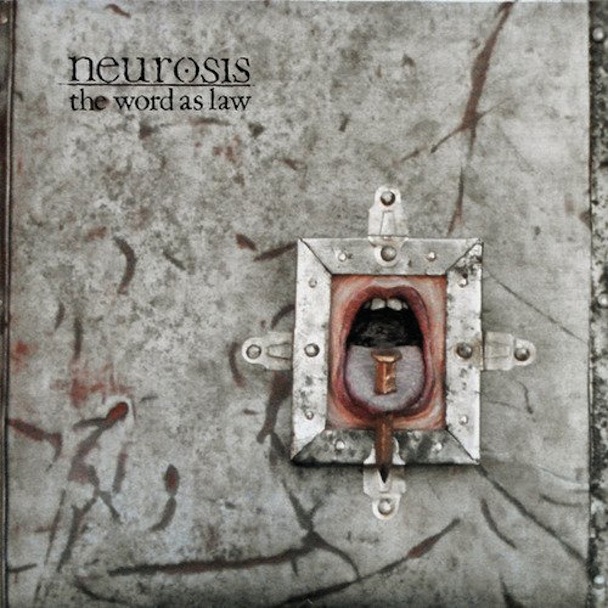
10. The Word As Law (1990)
The Neurosis of The Word As Law looks more familiar, at least on paper. Steve Von Till makes his Neurosis debut here, and the goofy nicknames go the way of the dodo.
More of Neurosis's signature tropes make their first appearances on The Word As Law. It features their first two 6-minutes-plus sprawlers in "To What End?" and album standout "Blisters," the latter of which serves as a prototype for the lengthy tunes that would populate Souls At Zero two years later. The band shows some maturity, managing tighter performances and heftier rhythms than before. A broader variety of guitar tones add some colorful textures to the grimy substratum.
Ultimately, though, The Word As Law is a second run at the relatively conservative hardcore that comprised Pain Of Mind. It's an improvement upon its predecessor, but in hindsight, the shadow of the band's later work still looms large over it.

9. Honor Found In Decay (2012)
Honor Found In Decay poses some problems for our ranking project. Most Neurosis albums reward repeated listening, and Honor Found In Decay has been out for less than two months. It could potentially improve its standing with time and attention.
Neurosis's name suggests psychic unrest, and it's almost strange to hear such a relentlessly experimental band sound so comfortable in their own skin. At this juncture in their career, they have nothing left to prove — they've climbed every available mountain. Honor Found In Decay serves as a fond recap of their accomplishments. It revisits tropes from throughout their career, and even expands a bit on some of them; Noah Landis's keys jump out of their whooshy-texture role and into the foreground more frequently than they ever have before.
It is good to hear Neurosis in such a confident and settled place. Still, their strongest material comes from tension and restlessness. Perhaps their personal and professional comfort has sapped some of that restlessness. Honor Found In Decay remains a triumph of craftsmanship, if not of innovation.

8. Neurosis & Jarboe (2003)
The Neurosis/Swans connection is a strong one. Swans main man Michael Gira supposedly considered recruiting Neurosis as his new backing band when Swans broke up in the '90s. This collaboration is the next best thing: Gira's Swans co-vocalist Jarboe takes over mic duties in Neurosis for an entire album.
In Swans, Jarboe mostly provides pensive contrast to Gira's domineering howl. She uses her entire range here, and what a range it is: layered harmonies, resonant crooning, childlike whispers, and grisly screams. It's a virtuoso performance that ranks among her best, thanks in part to the hair-raising instrumental atmosphere in which it appears.
Neurosis settles into a backing-band role with surprising ease on Neurosis & Jarboe. They hold their signature sonic tonnage in reserve for virtually the entire album, instead using their arsenal of drones and Jason Roeder's signature tribal tom work to endlessly build anxiety. There's not enough release for that tension; only "Erase" delivers on the album's whispered threats. For the most part, Neurosis stays out of Jarboe's way, glowering from the wings instead of lumbering into the fray. Still, Neurosis & Jarboe constitutes a fascinating aside. I hope a follow-up is in the works.

7. Given To The Rising (2007)
Neurosis has never broken up, but Given To The Rising still felt like a comeback upon its release. After exploring bleak soundscapes for the better part of a decade, the band used this record to unlimber the oppressive weight that defined their '90s material.
It's unusual for bands that shift away from metal to return to the genre, but Given To The Rising may be the most capital-M Metal offering in the Neurosis pantheon. Its mood is stark and bestial; its sound matches its cover. The dusty Americana that crept into the band's sound during the early aughts is nowhere to be found. In its place is riff-worshipping menace. "At The End Of The Road" is one of the most tense and sinister songs in Neurosis's catalog, keening airlessly for four minutes before unleashing a titanic single-note beatdown.
Given To The Rising is not the most adventurous album that Neurosis ever recorded. As far as sheer riffing firepower goes, though, it's hard to beat.
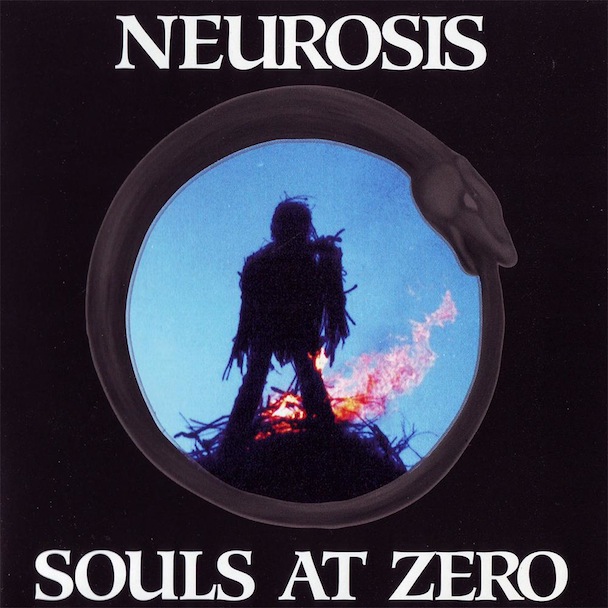
6. Souls At Zero (1992)
Souls At Zero marked the emergence of the 'real' Neurosis: a crazy-quilt of doom metal, hardcore, tribal rhythms, looped samples, exotic instrumentation, and druggy drones. Uninitiated listeners who want to take an extended tour of Neurosis's catalog would do well to start here.
This is an incredibly bold album, and upon its release in 1992 it must have seemed like an artifact from a parallel dimension. Neurosis wouldn't master their own machinery until Enemy Of The Sun, and they struggle to operate it at times here. Some songs sound unfinished, while others overstay their welcome.
But for a first crack at such an ambitious sound, Souls At Zero is a huge success. This lean and hungry incarnation of Neurosis is thrilling and frightening to behold in its better moments. "To Crawl Under One's Skin," "A Chronology For Survival," and the title track remain among the greatest tunes the band ever put to tape. Simon McIlroy, Neurosis's first keys/samples man, made his debut here, establishing the band's psychedelic edge and paving the way for Souls At Zero's tremendous follow-up.

5. A Sun That Never Sets (2001)
Sometimes the calm comes after the storm. During Neurosis's '90s road-warrior days, Scott Kelly would listen to the country and folk albums he grew up with as he fell asleep in the tour van. Those deep-seated Americana influences finally broke into Neurosis's sound on A Sun That Never Sets.
Next to the seismic one-two punch of Through Silver In Blood and Times of Grace, this disc sounds positively airy. Steve Albini's production peels off much of the doomy heft of the preceding efforts, leaving desiccated bones. The sparser tones create room for Kelly and Steve Von Till's considerable songwriting chops, emphasis on the song; their rough-hewn singing drives album highlights like "The Tide," "Stones from the Sky," and the hair-raising three-man vocal round that concludes "Falling Unknown."
A Sun That Never Sets is a transitional album in the sense that it hangs between the density of Times Of Grace and the austerity of The Eye Of Every Storm. Still, its soulful songwriting and towering crescendos make it one of the most memorable metal records of the aughts.

4. The Eye Of Every Storm (2004)
Metal fans typically reserve adjectives like "frigid" and "barren" for black metal. But when I think of windswept desolation, this album is my mental soundtrack. The Eye Of Every Storm is foreboding but beautiful, like a Cormac McCarthy landscape.
For a metal/hardcore band, Neurosis exhibits preternatural patience on this album. These songs rely on grinding repetition, growing from minimalist folk roots into hulking, gnarled sound sculptures. Albini sucks even more moisture out of Neurosis's instruments this time around; Jason Roeder's barbaric tom work supports dry, skeletal tones. When heaviness strikes, as it does on "Bridges," the guitars crackle like a snowstorm broadcast through a cheap TV set.
Neurosis's sparest album is also their saddest. Von Till and Kelly use their boot-leather singing voices to incredible effect. Loneliness and self-loathing share the lyrical stage with naturalistic imagery on "No River To Take Me Home," while the closer "I Can See You" pays searing tribute to a lost loved one. The Eye Of Every Storm hurts the soul, but it's as rewarding as it is agonizing.
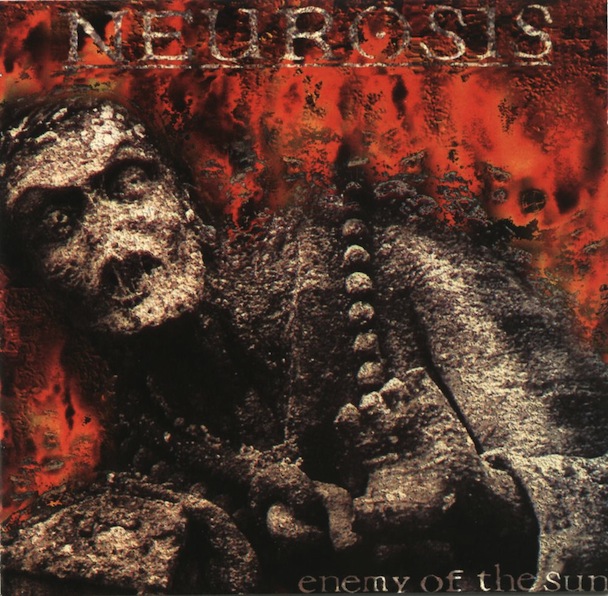
3. Enemy Of The Sun (1993)
Enemy Of The Sun opens with a sample from The Sheltering Sky, a 1990 film adopted from the 1949 Paul Bowles novel of the same name. It's a reminder of the transience of life: "Because we don't know when we will die, we come to think of life as an inexhaustible well. But everything happens only a certain number of times, and a very small number, really … and yet it all seems limitless."
Neurosis's choice of sample was prescient. Enemy Of The Sun stands at the beginning of one of the most fertile creative periods in metal history. It and its successors spawned an entire subgenre; it's so ingrained in the current metal scene that it's easy to take for granted. Still, 19 years after its release, Enemy Of The Sun remains a shocking listen. All of its disparate elements — mucky riffs, bad-trip electronics, violins and horns, Roeder's inexorable tom pounding — coalesce into a unified whole, held taut by the last of Neurosis's punk sinews. Most of these ideas appeared first on Souls At Zero, but here all of them work in harmony.
Enemy Of The Sun's other defining samples comes on "Burning Flesh In Year Of Pig" — a voiceover account of a monk burning himself in Saigon during the Vietnam War. That self-immolating intensity rages through this album, peaking as the whole band attacks Roeder's kit on closer "Cleanse."

2. Through Silver In Blood (1996)
If Neurosis developed into a great band on Enemy Of The Sun, they developed into an absolute juggernaut on Through Silver In Blood. Though Given To The Rising is more metal and Souls At Zero was more inventive, TSIB is the darkest and most frightening Neurosis album, which makes it one of the scariest metal albums ever.
Music of all sorts sounds creepier when played slower and lower. Neurosis takes full advantage of this fact on TSIB. It's like a chopped-and-screwed version of Enemy Of The Sun — the same components are filtered through drop-A tuning and crawling tempos. (Scott Kelly has a neck tattoo of the Black Flag bars with the legend "MY WAR SIDE II"; that influence becomes obvious for the first time here.) Riffs that would've been merely bruising on Enemy balloon into grueling tectonic shifts. Noah Landis delivers his first Neurosis performance here, and it's a doozy. He expands McIlroy's textures/samples role dramatically, piling layers of filth onto even the album's riffiest moments.
It's TSIB's unforgettable songwriting that seals the deal, not the aesthetic. These songs are by turns sinister (the title track, "Enclosure In Flame"), heart-rending ("Strength Of Fates," "Aeon"), and triumphant ("Purify"). "Locust Star," which Kelly tossed off backstage while on tour one night, might be Neurosis's single most efficient and affecting tune.

1. Times Of Grace (1999)
When you write about a rock album, the first instinct is usually to break it down into its components: Member X contributes this, Song Y sounds like that, Lyric Z goes like so, etc.
You can break down Times of Grace into its component parts. You can focus on its songwriting, which ever-so-slightly streamlines Through Silver In Blood's heaving girth. You can marvel at Steve Albini's production, which gave Neurosis the most devastating tones of their career and which began his ongoing relationship with the band. You can enumerate its chamber quintet's worth of un-metal instruments, which chime in to push climatic moments into the stratosphere. You can even try (and fail) to describe its apocalyptic riffing.
But doing so misses the point of this masterpiece. Times Of Grace captures a visionary band at the height of its powers and blessed with a unity of purpose. The divisions between instruments, voices, and songs fall away, and Neurosis acts as a single, cosmic force. It is very, very heavy. (Play Times Of Grace simultaneously with the Tribes Of Neurot companion album Grace for a truly mind-bending experience.)





